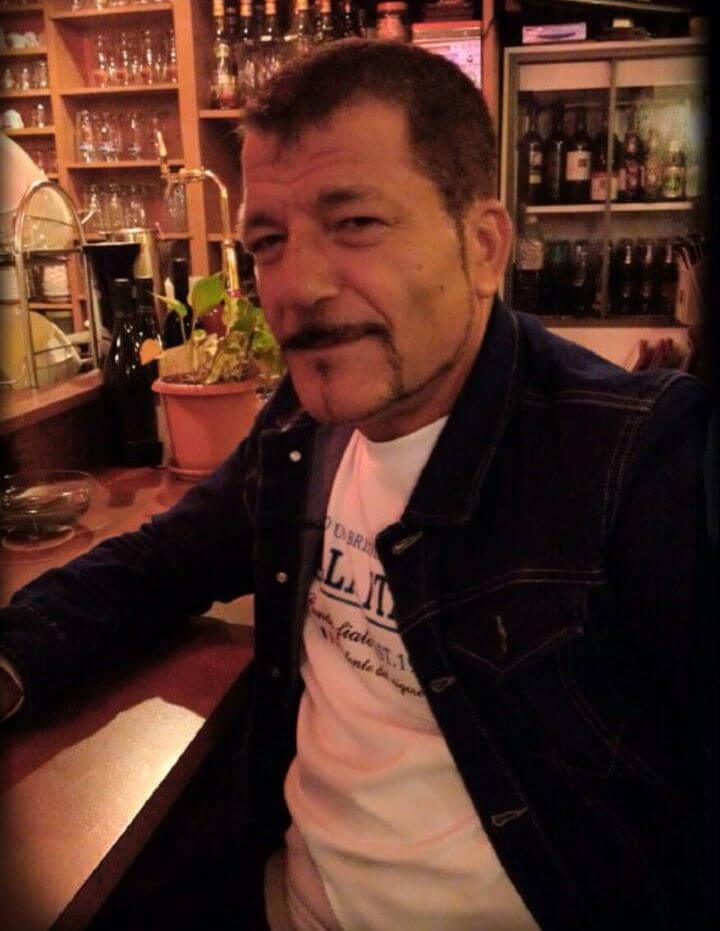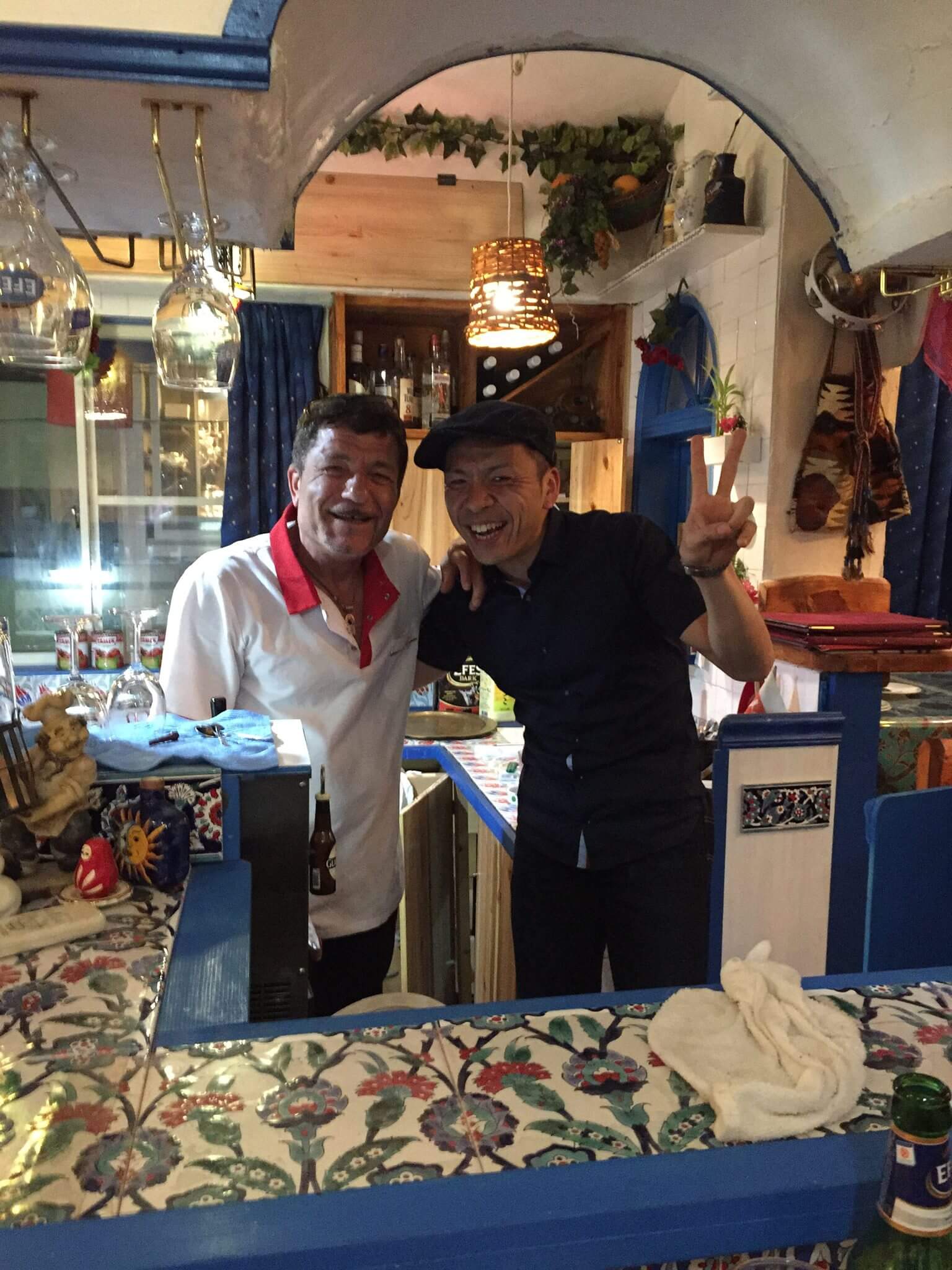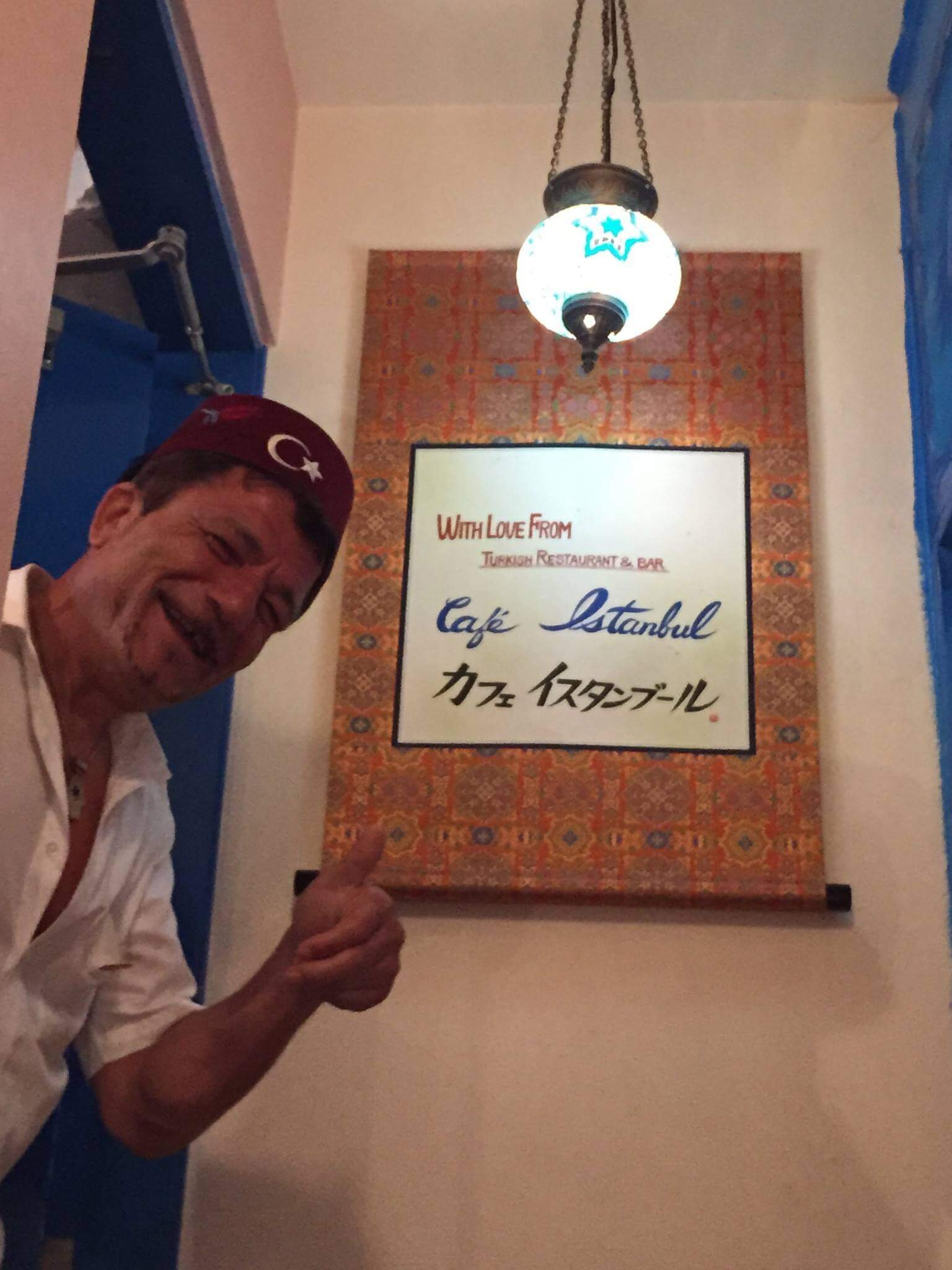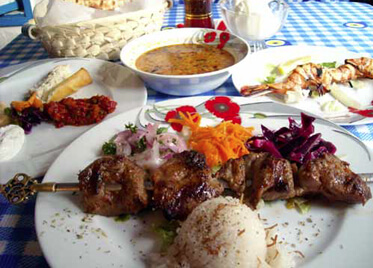Kakejiku and Kainan 1890 Film / Symbols of Friendship between Japan and Turkey
Contents
Kainan 1890 (a disaster at sea in 1890) Film
“Kainan 1890” (a disaster at sea in 1890) is a film made by Japan and Turkey, commemorating friendship between Japan and Turkey 125 years after the sinking of the Turkish frigate Ertugrul. A press conference was held in Tokyo July 9, 2015 to announce the completion of filming. Seiyou Uchino, the leading actor, and co-stars, Shiori Kutsuna, Yui Natsukawa, Takayuki Takuma, Toshiyuki Nagashima, Mitsutoshi Tanaka (film director), and Kenan Ece (Turkish actor), attended the event.
This movie is based on the wreck of the frigate Ertuğrul in 1890, and depicts the bonds between Japanese and Turkish people over the years since the accident.
The Wreck of the Frigate Ertuğrul
The Ertuğrul, a sailing frigate of the Ottoman Navy, was wrecked east of Kashinozaki Lighthouse on Kii-Ooshima Island, Kushimoto-chou Town, Wakayama prefecture, in the middle of the night of September 16, 1890.
When Recep Tayyip Erdogan, the 12th and current President of Turkey, talked with Shinzou Abe, the current prime minister of Japan, in 2014, it was decided that the two countries would make a film together. Shinzou Abe became the principal advisor of an association to make sure that the movie would be a success. It’s no exaggeration to say that this movie is a national project.
Seiyou Uchino plays Dr. Motosada Tamura, who rescued and cared for the survivors. He was deeply moved at the finish of filming and stated, “it is a miracle that Japan and Turkey, which are remote from each other, have an extremely stable friendship. I think the villagers had much consideration for the survivors and their families in the disaster, and this consideration strongly motivated the villagers in their rescue efforts. I hope that this film will convey the consideration for the others to not only Japan and Turkey but also all over the wold. I heard that Turkish schools generally teach about the Ertuğrul incident, so the Turkish people trust the Japanese people. On the contrary, the Japanese people don’t know much about the incident, so this will be a good opportunity. This film seems destined to endure as a historical record.” Kenan Ece, one of the actors in the film, stated, “we must pass down this story to posterity. I think peaceful stories like this are more important than stories about war.”
A video message was delivered from the leaders of the two countries because this movie is a national project for each countries. Recep Tayyip Erdogan commented, “I hope that this film will strengthen bonds between Japan and Turkey and brighten their future.” Shinzou Abe also commented, “I hope that this film, made through the cooperation between two countries, will arouse their emotions and empathy and deepen their friendship.”
The Distress of Frigate Ertuğrul
Summary
The distress of Frigate Ertuğrul was a shipwreck that Ertuğrul, a sailing frigate of the Ottoman Navy, suffered off the east of Kashinozaki Lighthouse in Kii-Oshima Island, Kushimoto-cho Town, Wakayama prefecture, on the middle of the night of September 16, 1890. This disaster is remembered as a starting point of the friendship between Japan and Turkey. Today, near the Kashiwazaki Lighthouse in the town of Kushimoto-cho, Wakayama Prefectuere, the Frigate Ertuğrul Memorial and the Turkish Museum stand. And, every five year residents of the town and the Embassy of Turkey in Japan jointly hold a memorial ceremony.
Progress of the Incident
In response to the visit to Istanbul by Imperial Prince Komatsunomiya Akihito and his wife from the Imperial family of Japan in 1887, it was decided that the Ertuğrul, a wooden frigate (built in 1864 with a total length of 76 m) would be dispatched, to Japan; this would also serve as a training voyage for the Ottoman Empire Navy, which lacked sufficient training at that time. In July 1889, she set sail from Istanbul. Despite encountering many difficulties on her journey, she received an enthusiastic welcome in the Islamic countries she stopped off at on her way home; she finally arrived back in Japan the next year in June 1890, with the voyage having taken 11 months. However, the damage to the hull and commodity and financial shortage of the Ertuğrul had piled up so much since her departure that it was now nearly impossible for her to sail back.
Since many crews had caught cholera, it was in September that they finally found a chance to sail out of Yokohama Port. Behind this irrational dispatch, there was an intention of the Sultan Abdülhamid II to show off the power of the Ottoman Empire, the leader of Muslim countries, to Muslims in India and Southeast Asian countries. The disaster occurred on their way home.
In the middle of the night on September 16, 1890, the Ertuğrul was pushed by a strong wind in a typhoon and hit the rocks at Kashinozaki, Kii-Ooshima Island. This led to a catastrophic incident that 587 people including the commander Osman Pasha missed or lost. At this time, the survivors, who were washed ashore near the Kashinozaki Lighthouse, scrambled up the cliff several dozen meters high and let the lighthouse know the disaster. Receiving information from the lighthouse keeper, all the people in Kii-Ooshima-mura village (now Kushimoto-chou Town) rescued and cared for the survivors. Despite few food reserves since the typhoon had stopped people from fishing, they provided clothes such as yukata, and eggs, potatoes and even chickens they had kept for an emergency, and dedicated themselves to care for the survivors. As a result, 69 people taken to a temple, a school and the lighthouse in Kashino were rescued alive. The next day of the disaster, Shu OKI, the Ooshima village mayor, was informed of the incident via the head of the Kashino ward. Oki asked help of foreign consulates in Kobe Port and arranged to transport the survivors to the hospital in Kobe City while reporting to the Japanese government via a prefectural agency. Having received the news, the Emperor Meiji was deeply troubled and directed the government to help as much as possible, as they say. The survivors were sent back by two corvettes of the Imperial Japanese Navy, ‘Hiei’ and ‘Konogo,’ which had departed from Shinagawa Bay in Tokyo on October 5, arriving in Istanbul, the capital of the Ottoman Empire, on January 2 of the next year, 1891. The distress of the Ertuğrul made a great impact on people in the Ottoman Empire; however, under the rule of the absolute monarch Abdülhamid II, the incident was regarded as martyrdom due to a natural disaster and the aspect as a man-made calamity was concealed. The news was widely reported in newspapers, and condolence money for the families of the victims was collected. Since the newspapers also reported the rescue operation by the people of Ooshima Village and the dedication of the Japanese government, Turkish people had a good impression on a far foreign country Japan and Japanese people, as they say.
The remains of the Ertuğrul still lie on the bottom of the sea off Ooshima Island. Since 2007, the multinational underwater archaeological research group, consisting of Turkey as a leading country and several countries, has been investigating the Ertuğrul in the water and working on the salvage of her remains from the seabed.
On June 7, 2008, the President of the Republic of Turkey, Abdullah Gül, attended the memorial ceremony during his visit to Japan.
Relations between Japan and Turkey after the Incident
In Japan, the distress of the Ertuğrul was also reported as shocking news, and a great amount of contributions and condolence money was collected via the government.
Souyuu Yamada, the successor of the Sohen school of tea ceremony, was one of Japanese who was shocked by the accident. He started a fund-raising campaign among Japanese citizens to collect contributions for the families of the victims of the Ertuğrul incident; after two years, he traveled to Istanbul, the capital of the Ottoman Empire, carrying the collected donations. As soon as Turkish people noticed that a private citizen Yamada had brought contributions, he received enthusiastic welcome and further was granted an audience with the Sultan Abdülhamid II. Then Yamada, in response to the Sultan’s request, decided to stay in Turkey and started a trading shop in Istanbul. He taught the Japanese language and told of Japan to young officers at the military academy, and helped to arrange visits to Istanbul for high officials in the Japanese government; thus, he dedicated himself to cultivate international civilian and governmental exchanges when there were no established diplomatic relations between Japan and Turkey. Kemal Ataturk, who later became the first president of the Republic of Turkey, is said to have been one of his students when he was teaching at the military academy.
When Japan won the Russo-Japanese War, which had broken out while Yamada stayed in Istanbul, the people in the Ottoman Empire went wild with joy at the news, regarding it as a brilliant achievement by a small eastern country Japan, since they had long suffered the pressure from Russia and therefore grown affinity with Japan, the country which also had been troubled by the pressure from Russia. It is said that naming a child Tougou after the Admiral Heihachiro TouGou, a hero of the Japanese Imperial Navy, became popular at the time.
However, despite such civilian exchanges supported by Souyuu Yamada and others, formal diplomatic relations were not realized until the fall of the Ottoman Empire. The reason for this was that negotiations over the establishment of diplomatic relations between Japan and the Ottoman Empire remained deadlocked despite both sides engaging in frequent rounds of negotiations; the Ottoman Empire did not wish to enter into another unequal treaty, but Japan was demanding the same level of treaty as the Ottoman Empire had agreed to with the great powers of Europe and America, insisting on Japan’s extraterritorial rights.
In 1914, when the First World War broke out, the foreign situation of the Ottoman Empire, which had being dragged into the Central Powers consisting of Germany and others, grew tense, so Yamada closed his shop in Istanbul and returned to Japan. Japan, having sided with the Allies consisting of Britain and others in this war, became the Ottoman Empire’s enemy. Through drastic changes of circumstances such as the fall of the Ottoman Empire and the establishment of the Republic of Turkey after the war, Japan and Turkey finally entered into diplomatic relations following the conclusion of the Treaty of Lausann in 1924 and the establishment of the Embassy in 1925.
Memory as a Starting Point of Friendly Relations between Japan and Turkey
The distress of the Ertuğrul was a tragedy caused by a foreign policy of the late Ottoman Empire and the weakened Navy; however, Japan’s amity to the victims of the disaster has been long remembered by persons concerned in both countries as a starting point of friendly relations between Japan and Turkey. When Turks talk to Japanese people about the history of friendly relations between Turkey and Japan in public, they almost always mention the story of the Ertuğrul and her disaster above all things.
Contrary to Turks’ discourse, the story of the Ertuğrul’s distress was not well remembered in Japan and had been rarely mentioned in public for a long time. However, in the 21st century, the whole story of the Ertuğru disaster came to be introduced through electronic bulletin boards or mail magazines on the Internet along with the following incident. In 1985 during the Iran-Iraq War, when Iraq proclaimed indiscriminate attacks to any aircraft flew over Iran, the Japanese people in Iran were stuck in a crisis because the rescue by Self-Defense Force was not made according to the principle that the overseas dispatch of Self-Defense Force troops is prohibited, and Japan Airlines did not fly JAL international airplanes because of a union issue. Thus all 215 Japanese people were picked up by the Turkish Airlines airplane dispatched in response to the Ambassador’s request and managed to return to Japan via Turkey safely. The story of the Ertuğrul disaster has gradually spread out among the people in Japan; it has been frequently talked about in many TV programs or magazines, especially after the Turkish team achieved remarkable results in the 2002 FIFA World Cup Korea/Japan. In 2004, a children book that introduced the incident was designated as a book on which fifth and sixth grade elementary school pupils were assigned to write book reports for a writing competition. Thus, also in Japan today, the distress of the Ertuğrul is regarded as an essential episode to talk about “a pro-Japanese country, Turkey.”
Kakejiku Is a Symbol of Friendship between Japan and Turkey.
I have liked Turkey since the 2002 FIFA World Cup. Though Japan lost to Turkey in the match, I was impressed of the game. I had never had an interest in Turkey until then, but after that I came to have an interest in Turkey. As I researched about Turkey, I came to know the wreck of the Ertuğrul and I now had an affinity with Turkey.
When I was drinking at a pub in Kobe city last month, I talked to a foreigner, who happened to come to the pub. The foreigner was none other than a Turkish person. I got really excited, and talked to him about various things ecstatically. His name is Metin, who was very friendly and frank. This was why I liked Metin right away.

Metin Macit
After Metin ran a restaurant in Turkey over 10 years, he have lived in Kobe city since 1992 and opened his own Turkish restaurant, Cafe Istanbul, in 2000.
Even though a few weeks have only passed since I encountered him for the first time, I often spend my time in his restaurant. Though Turkish cuisine, which Metin served, is actually delicious, chatting with him was even better for me. His similar appearance to mine strengthens my affinity to him.

Metin with me
I presented a kakejiku (Japanese hanging scroll) to Metin the other day produced by my company, ART NOMURA. Metin’s personal character, beautiful Turkish cuisine, stylish interior decoration ―all of the elements harmonize with each other effectively in the restaurant. I hoped that the restaurant will have good business, so I presented the kakejiku. Besides, nothing is happier for me than the fact that the kakejiku, which is representative of Japanese traditional culture, is displayed at the Turkish restaurant. I was particular about the mounting fabric color of the kakejiku while being conscious of Turkish national flag color, so I think that the kakejiku matches the atmosphere in the restaurant.

My present kakejiku (Japanese hanging scroll)
The “Kainan 1890” film will be released on December, 2015 in Japan. Of course, I intend to go and watch it. I am in the course of the long history of friendly relations between Turkey and Japan now, despite it being quite small. I really feel happy about the fact. I dream that the day will come when the Turkish people enjoy the kakejiku (Japanese hanging scroll).

Cafe Istanbul Information
Adress:
2F 2-9-5 Kitanagasadouri, Chuuou-ku, Kobe city, Hyougo Prefecture, 650-0012, JapanTel: +81-78-391-0235
URL:
https://www.facebook.com/cafe.istanbul.kobe (facebook)
https://www.instagram.com/explore/locations/1020792692 (Instagram)
Related Article: Ceremony recalls sinking of Turkish frigate off Wakayama in 1890
A memorial ceremony was held in the Wakayama Prefecture town of Kushimoto on June 3, commemorating friendship between Japan and Turkey 125 years after the sinking of the Turkish frigate Ertugrul.
When the frigate sank off Kushimoto in September 1890, residents on the island of Kii Ooshima helped rescue and care for shipwrecked crew members — actions that helped strengthen ties between Japan and Turkey.
About 600 people from both countries attended the ceremony, which was sponsored by the Embassy of the Republic of Turkey in Japan and the Kushimoto town government. Due to bad weather, the ceremony was held at a cultural center in the town instead of in front of a monument on Kii Ooshima. A ceremony on the deck of the Turkish frigate Gediz was also cancelled.
Japan’s Princess Akiko of Mikasa, who serves as president of the Japan-Turkish Society, attended the ceremony, along with Turkish Parliament Speaker Cemil Cicek and Turkish Ambassador to Japan Ahmet Bulent Meric.
“It is my hope that each person, supporting a bridge in relations, will continue in weaving a new history for both countries,” Princess Akiko stated. Cicek read out a statement thanking island residents for rescuing members of the Ertugrul while endangering their own lives in so doing.
Japan and Turkey are now making a film titled “Kainan 1890,” depicting the bonds between people over the years since the accident. Actress Shiori Kushina, who has a double role in the film and has taken part in filming in Kushimoto and in Turkey, also attended the memorial ceremony.
In the Kashino district of Kushimoto, near where the frigate sank in 1890, a father and son continue to tell people about the disaster. Akikazu Hamano, 87, has shared stories of how his grandfather helped rescue people and described what his father saw and heard. His 54-year-old son Mitsunori, meanwhile, has joined friends to start telling people about the sinking.
It was Akikazu’s father Asajirou (1878-1944) who conveyed memories of the disaster to him. Asajirou was 12 years old at the time of the sinking. Asajirou’s father Touzou Iwatani (1840-1922), is said to have served as a leader dividing up the tasks of diving for and rescuing people from the Ertugrul.
“The wind was strong, and when he (Asajirou) closed the shutters and went inside, he heard two or three loud explosions,” Akikazu relates. “They carried Turkish people on their backs, secured by waistbands, with a person supporting them from behind. They took them from the bottom of a cliff up a narrow path, rescuing them over several hours.”
Residents are said to have given the rice they had saved for New Year’s and the Bon festival, and the sweet potatoes they had stored up to feed the crew members.
When Akikazu was a fisherman and he dived in the area where the Ertugrul sank, gold coins and other items from the frigate lay buried in the sand on the ocean floor. As someone who had received precious memories about the disaster, he decided he had to do something. Over a period of about 40 years, when he was a ferry worker, he related his father’s and grandfather’s experiences to fishing customers. Since retiring about six years ago, he has continued to talk to the people who visit at their request.
The detailed account that Akikazu received is precious even among the locals. When Mitsunori was in elementary school, he had Akikazu talk about the disaster for the first time, and after that he learned a lot by reading written material and listening to elderly people. Last autumn Mitsunori and seven others, including descendants of residents who helped rescue people from the sunken frigate, formed a committee designed to preserve stories about the Ertugrul sinking.
“We’ve now got people who can pass down memories. I’m happy that I kept speaking about it,” Akikazu said with a smile.
June 04, 2015 (Mainichi Japan)

